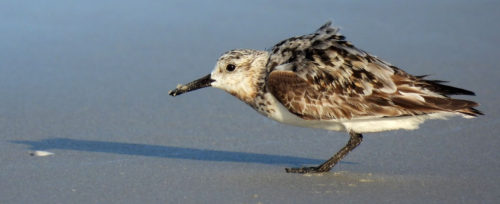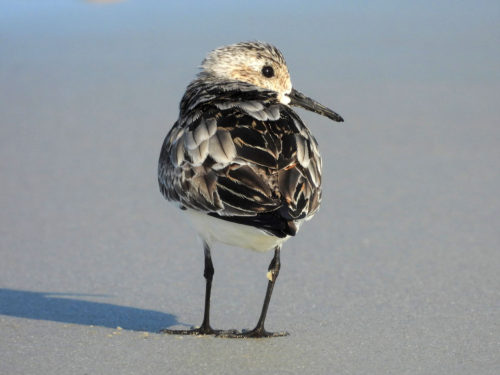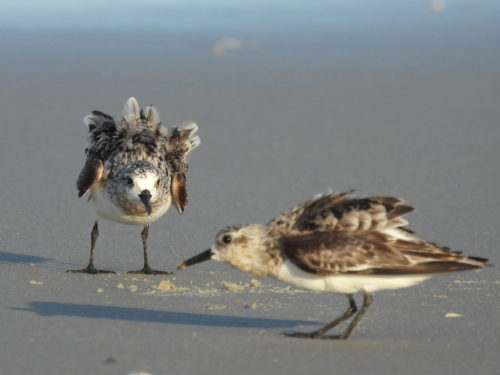Sanderlings, Calidris alba, are chubby little sandpipers that grow to only 7 or 8 inches, weigh 1.5 to 3 .5 ounces, and have a wingspan of up to 13.8 inches.
Sanderlings breed in the arctic tundra and migrate to the southern United States and South America in the fall where they spend their winters. Non-breeding adults may choose to avoid the long flight to the arctic and spend their summers in the hotter climates.
Look for Sanderlings foraging on Florida’s beaches and sometimes in mudflats. These shorebirds use their little black legs to run fast to snatch up prey when the tide recedes and run away as the tide rolls in. Their black beaks are perfect for plucking aquatic invertebrates, most often sand crabs, from the sand. Sanderlings also dine on small mollusks, insects, worms, grasses, seeds, and human junk food.
Sadly, Sanderlings are listed as a species of high concern by the Western Hemisphere Shorebird Reserve Network due to declining populations. Threats include the development and alteration of shoreline habitats, pesticide pollution, and oil spills.
Sanderlings are fierce defenders of their feeding grounds. Humans can be fierce defenders of their feeding grounds too. Participate in beach cleanups, leave nothing behind when you visit a beach and advocate for the preservation of Sanderling’s natural habitat.



